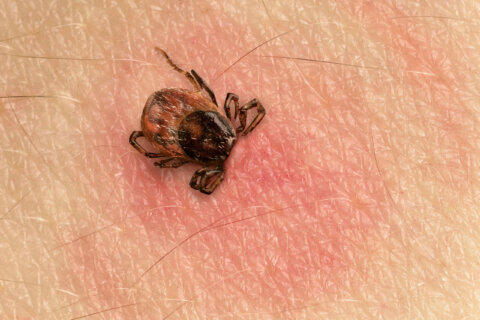While you may be skipping cookies, cake and ice cream in an effort to consume less added sugar, chances are you’re still eating more sugar than you realize. That’s because added sugar hides in many commonly consumed foods — even ones that aren’t super sweet.
Eating too much added sugar may contribute to excessive calorie intake, obesity and chronic diseases like heart disease, certain types of cancer and Type 2 diabetes.
Added Sugar Guidelines
According to the 2020-2025 Dietary Guidelines for Americans, all Americans over two years old should consume less than 10% of calories from added sugars per day. For a 2,000-calorie diet, that means no more than 200 calories of added sugar, or 50 grams of sugar (about 12 teaspoons of sugar), per day. According to those same guidelines, toddlers and infants under two years old should not consume any added sugar.
The American Heart Association has even stricter guidelines that recommend women consume no more than 100 calories of added sugar per day (about six teaspoons) and men consume no more than 150 calories (about nine teaspoons).
[READ; 10 Tips for Healthy Living With Heart Disease.]
Sources of Added Sugar
On average, added sugars comprise 13% of our daily calorie intake and come primarily from several foods:
— Sweetened beverages.
— Desserts.
— Cakes, cookies and pie.
— Coffee and tea (with their additions).
— Candy.
These foods are sweet, so it may come as no big surprise. However, added sugar is also lurking in savory foods, like sauces and dressing. Food manufacturers often use sugar as a preservative to extend the shelf life of their products. Added sugar is frequently disguised by various names, including sucrose, brown sugar, cane sugar, corn sweetener, corn syrup, honey, dextrose and coconut sugar. But all are simply another name for sugar.
[Read: Keto-Friendly Sweeteners.]
Reducing Your Added Sugar Intake
One way to help reduce your added sugar intake is to read labels when you go supermarket shopping. Food labels now list how much added sugar is found in packaged products, making it easy to check your favorite foods and drinks and compare products.
The sugars in fruit and dairy are healthy and naturally occurring sugars and so do not fall under the category of added sugar. Fruit lovers don’t need to worry about the sugar in watermelon and berries.
[Read: The Best Diets for Your Heart]
Surprising Sources of Added Sugar
While soda or sweetened iced tea are prime examples of drinks with added sugar, some everyday foods also have surprisingly high amounts of added sugar.
Yogurt
While yogurt has certain health benefits and is rich in protein, calcium and probiotics, many types contain too much added sugar. Many brands contain 10 to 15 grams (around two and a half to four teaspoons) of added sugar in addition to the naturally occurring sugar from lactose.
To decrease your added sugar intake, choose brands that are lower in sugar or offer the honey/syrup in a pouch on the side so that you can control the amount. Or, buy plain yogurt and add berries, nuts, seeds and a bit of honey if you desire.
Tomato sauce
While tomato sauce generally tastes savory rather than sweet, many brands contain 5 to 12 grams of added sugar (around 1 to 3 teaspoons) in a half-cup serving. This amount of sugar is equivalent to what is added in some cookies. Read food labels to compare the added sugar content in your favorite marinara or pizza sauce.
Salad dressing
Sweet salad dressings like French dressing and raspberry vinaigrette tend to contain the most added sugar, around 6 to 7 grams (one and a half to two teaspoons) per 2 tablespoon serving. For a lower sugar salad dressing, you can make your own dressing with olive oil, lemon, balsamic vinegar, mustard and spices. Additionally, watch how much dressing you pour onto your salad.
Cereal
While it’s no surprise that chocolatey and fruity cereals contain lots of added sugar, even some of the “healthy” oat- and bran-based cereals have a considerable amount of added sugar. In fact, some brands contain upward of 12-18 grams (around three to five teaspoons) of added sugar per one cup serving.
While people consider granola to be a healthy cereal, it’s often full of added sugar. Some granolas contain 15 grams (4 teaspoons) of added sugar in 1/3 cup serving. Because most people eat more than a serving, it’s easy to get a hefty sugar portion in just one bowl.
Read the ingredient list and avoid brands that list sugar or some other sweeteners like honey, cane sugar or coconut sugar within the first few ingredients.
Condiments
Just one tablespoon of ketchup contains 4 grams (1 teaspoon) of added sugar, and many of us use more than 1 tablespoon worth of ketchup on our french fries, chicken and burgers.
Barbecue sauce, hoisin sauce and teriyaki sauce also contain lots of added sugar. For example, a 2 tablespoon serving of barbecue sauce contains around 16 grams (4 teaspoons) of added sugar.
So, the next time you are at a barbecue be mindful of your portion and try using as little ketchup and barbecue sauce as possible. Or pass the mustard.
More from U.S. News
How Some Foods Can Compromise Your Immunity
Desserts That Won’t Ruin Your Diet
12 Fruits You Can Eat on a Low-Carb Diet Plan
Added Sugars Hiding in Your Diet originally appeared on usnews.com







